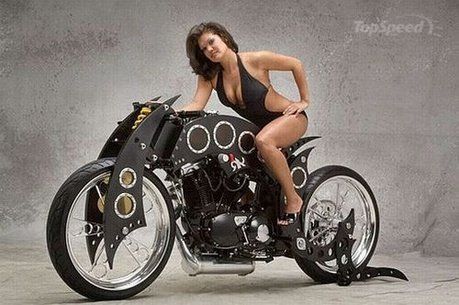 Sometime after 1930, Roberto Sigrand's Zenith-J.A.P. KTOR became the subject of extensive modification, in a quest for a World Speed Record. The top photograph, taken either at a trade show or in Sigrand's factory (Aros Kim), shows the Zenith atop a display of the Kim factory products; cylinder liners, piston rings, etc - replacement parts for the motor trade.
Sometime after 1930, Roberto Sigrand's Zenith-J.A.P. KTOR became the subject of extensive modification, in a quest for a World Speed Record. The top photograph, taken either at a trade show or in Sigrand's factory (Aros Kim), shows the Zenith atop a display of the Kim factory products; cylinder liners, piston rings, etc - replacement parts for the motor trade.
The display states the machine is the holder of the South American speed record from 1930, that Roberto Sigrand was the 'pilot', and that the motorcycle was modified later mechanically 'entirely in their works', which included the addition of a compressor and twin magnetos. The text is obscured, but it seems to claim that in this new configuration, 'Super Kim' should be capable of 250km/h.
This figure for 'Super Kim' is optimistic, but not outrageous, as in 1937, Eric Fernihough took another J.A.P.-engined motorcycle ( a Brough Superior) to 273.44km/h (169.68mph).
On inspection of this machine in 2001, the bores, cylinder head and valves were entirely clean and appeared new. There was never a claim that Super Kim, in this guise, made a full speed run - I'll have to press the family for more details. It is possible that the machine was never used in anger in this guise. Certainly, it came to me identical in detail to the machine as in this photo, as if it had been stored for a long time (70 years).

Some details; two lightened 'baskets' on the crankcase and clutch are milled steel, and support outrigger bearings for extra-long shafts on the crank and gearbox, necessary for the dual runs of duplex chain on the primary side. One chain went to the gearbox, which sits high under the seat, the second chain runs parallel and drives the supercharger, which sits below the gearbox. The frame is unmolested - Sigrand found a method of installing the blower which didn't require major modifications. The inlet tract emerges at the bottom of the machine, and branches to each side of the rear wheel, where a pair of twin-float Amac TT carbs feed the blower. The inlet manifold is an aircraft-style finned tube and incorporates a blow-off valve for excess pressure. I didn't measure the capacity of this tube, but for proper supercharger balancing, it must be equal in capacity to the engine size (1.1 liter). The supercharger also must be the same capacity as the engine, and this 'Garrett' blower looks identical to those used on MG 'K' cars, which have 1100cc engines - a likely source for this item.

Sparks were provided by TWO twin-spark Bosch magnetos, firing two different sets of plugs; a pair of 14mm plugs (Bosch ceramic, in black) on the timing side, and a pair of 18mm plugs (Bosch again, but with translucent Mica insulators - very pretty!) on the drive side. My thought was that these mags weren't run simultaneously; that one set of plugs were 'soft' and one 'hard', for warming up and open throttle work - one could switch from one magneto to the other with a kill switch. It would be extremely difficult to 'time' the two magnetos to fire at exactly the same moment, if they were indeed run together.
The gearbox is a 'Super Heavyweight Special Brough' item from Sturmey-Archer, one of six made for ultra-high-speed work (and meant for GB; I'm curious where Sigrand sourced this one!). Gear changing was accomplished with the rider's knee; a Norton 'dolls' head' positive-stop shifter has been grafted on the drive side near the petrol tank - when crouched over the machine, the rider's knee fits between the tank and the lever. Thus, upshifting is accomplished by nudging the lever outwards.

The rear brake looks to have been milled from solid, and is a 10" finned item with skeletal drum, heavily drilled for lightness, but clearly meant to work. The 'seat' is a simple steel sheetmetal plank, completely unsprung and unpadded. The footpegs are very near the rear axle, making for a loong rider's layout.
My intention was to rehabilitate the motorcycle without 'restoring' it, and take it to Bonneville for a flat-out run. Perhaps someday it will be resuscitated...








No comments:
Post a Comment